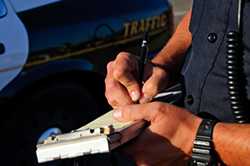Seat Belts: Get the Facts
How big is the problem of crash-related injuries and deaths to drivers and passengers?

Motor vehicle crashes are a leading cause of death among those aged 1-54 in the U.S.1 Most crash-related deaths in the United States occur to passenger vehicle occupants (drivers and passengers).2
For adults and older children (who are big enough for seat belts to fit properly), seat belt use is one of the most effective ways to save lives and reduce injuries in crashes.3 Yet millions do not buckle up on every trip.4
Deaths
- A total of 22,441 passenger vehicle occupants died in motor vehicle traffic crashes in 2015.2
- More than half (range: 52%-59%) of teens (13-19 years) and adults aged 20-44 years who died in crashes in 2015 were unrestrained at the time of the crash.2
Injuries
- More than 2.5 million drivers and passengers were treated in emergency departments as the result of being injured in motor vehicle traffic crashes in 2015.1
- Young adult drivers and passengers (18-24) have the highest crash-related non-fatal injury rates of all adults.5
Costs
- Non-fatal crash injuries to drivers and passengers resulted in more than $48 billion in lifetime medical and work loss costs in 2010.6
Who is least likely to wear a seat belt?
Age
- Young adults (age 18-24) are less likely to wear seat belts than those in older age groups.7
Gender
- Men are less likely to wear seat belts than women.7
Metropolitan Status
- Adults who live in non-metropolitan areas are less likely to wear seat belts than adults who live in metropolitan areas.8
State Laws
- Seat belt use is lower in states with secondary enforcement seat belt laws or no seat belt laws (83% in 2016) compared to states with primary enforcement laws (92% in 2016).9
Seating Position in Vehicle
- Rear-seat motor vehicle passengers are less likely than front-seat passengers to wear a seat belt,10 making them more likely to injure themselves and drivers or other passengers in a crash.11
What is the impact of seat belt use?
- Seat belts reduce serious crash-related injuries and deaths by about half.12
- Seat belts saved almost 14,000 lives in 2015.3
- Air bags provide added protection but are not a substitute for seat belts. Air bags plus seat belts provide the greatest protection for adults.13

Primary enforcement laws make a difference
Research shows, primary enforcement seat belt laws make a big difference in getting more people to buckle up.14 A primary enforcement seat belt law means a police officer can pull a vehicle over and issue a ticket just because a driver or passenger covered by the lawa is not wearing a seat belt. A secondary enforcement law only allows a police officer to issue a ticket for someone not wearing a seat belt if the driver has been pulled over for some other offense. As of May 2017, 32 states did not have a primary enforcement law covering all seating positions.15
Observed seat belt use in 2016 was 92% in states with primary enforcement laws but only 83% in states with secondary enforcement laws or no seat belt laws.9
Footnotes
a State primary and secondary seat belt laws vary by whether driver and front seat passengers are required to be buckled or whether drivers and all passengers (i.e., front and rear seats) are required to be buckled. These requirements may also vary depending on the age of the passenger. For information on laws in each state, check with the Insurance Institute for Highway Safety at http://www.iihs.org.
What can be done to increase seat belt use among adults?
When it comes to increasing seat belt use, individuals, government, and health professionals can help promote safety.
States can:
- Consider proven strategies for increasing seat belt use and reducing child motor vehicle injuries and deaths, which include:14,16
- Primary enforcement seat belt laws, which have been shown to increase use and reduce deaths compared with secondary enforcement laws.
- Seat belt laws that apply to everyone in the car, not just those in the front seat.
- Fines for not wearing a seat belt that are high enough to be effective.
- Make sure that police and state troopers enforce all seat belt laws.
- Support seat belt laws with visible police presence and awareness campaigns for the public.
- Educate the public to make seat belt use a social norm.
Health professionals can:
- Remind patients about the importance of seat belt use.
- Encourage patients to make wearing a seat belt a habit.
- Wear seat belts themselves and encourage their colleagues to do the same.
Parents and caregivers can:
- Use a seat belt on every trip, no matter how short. This sets a good example.
- Make sure children are properly buckled up in a car seat, booster seat, or seat belt, whichever is appropriate for their age, height, and weight.
- Have all children age 12 and under sit properly buckled in the back seat.
- Remember to never place a rear-facing child safety seat in front of an air bag.
- Properly buckle children in the middle back seat when possible because it is the safest spot in the vehicle.
Everyone can:
- Use a seat belt on every trip, no matter how short.
- Require everyone in the car to buckle up, including those in the back seat.
Related Pages
- Buckle Up: Restraint Use State Fact Sheets
- Restraint Use and Motor Vehicle Occupant State Data
- Seat Belt Use US Map
- What Works: Strategies to Increase Restraint Use
- Child Passenger Safety
- Vital Signs: Adult Seat Belt Use
- Motor Vehicle Prioritizing Interventions and Cost Calculator for States (MV PICCS)
Additional Resources
-
data.cdc.gov
View and download dozens of motor vehicle datasets and visualizations, including charts and maps, on data.cdc.gov. -
CDC’s Safe Driving Board on Pinterest
Help spread the word about the importance of seat belts. Visit the CDC Safe Driving Pinterest board for ready-to-share graphics and social media content.
References
- Centers for Disease Control and Prevention. WISQARS (Web-based Injury Statistics Query and Reporting System). Atlanta, GA: US Department of Health and Human Services, CDC; 2015. Available at https://www.cdc.gov/injury/wisqars/index.html. Accessed May 18, 2017
- National Highway Traffic Safety Administration. Traffic Safety Facts: 2015 Data – Occupant Protection. Washington, DC: US Department of Transportation, National Highway Traffic Safety Administration; 2017. Publication no. DOT-HS-812-374. Available at https://crashstats.nhtsa.dot.gov/Api/Public/ViewPublication/812374. Accessed May 18, 2017.
- National Highway Traffic Safety Administration. Lives saved in 2015 by restraint use and minimum-drinking-age laws. Washington, DC: US Department of Transportation, National Highway Traffic Safety Administration; 2016. Publication no. DOT-HS-812-319. Available at https://crashstats.nhtsa.dot.gov/Api/Public/ViewPublication/812319. Accessed May 18, 2017.
- Shults RA, Beck LF. Self-reported seat belt use, United States, 2002-2010: Does prevalence vary by state and type of seat belt law? J Safety Res 2012;43:417-20.
- Beck LF, West BA. Vital Signs: nonfatal motor vehicle-occupant injuries (2009) and seat belt use (2008) among adults—United States. MMWR 2011;59(51):1681-6.
- Centers for Disease Control and Prevention. WISQARS (Web-based Injury Statistics Query and Reporting System): Cost of Injury Reports. Atlanta, GA: US Department of Health and Human Services, CDC; 2014. Available at https://wisqars.cdc.gov:8443/costT/. Accessed May 19, 2017.
- Strine TW, Beck L, Bolen J, et al. Potential moderating role of seat belt law on the relationship between seat belt use and adverse health behavior. Am J Health Behav 2012;36:44-55.
- Strine TW, Beck LF, Bolen J, et al. Geographic and sociodemographic variation in self-reported seat belt use in the United States. Accid Anal Prev 2010;42:1066-71.
- National Highway Traffic Safety Administration. Traffic Safety Facts: Seat Belt Use in 2016 – Overall Results. Washington, DC: US Department of Transportation, National Highway Traffic Safety Administration; 2017. Publication no. DOT-HS-812-351. Available at https://crashstats.nhtsa.dot.gov/Api/Public/ViewPublication/812351. Accessed May 18, 2017.
- Bhat G, Beck L, Bergen G, Kresnow M. Predictors of rear seat belt use among US adults, 2012. Journal of Safety Research 2015;53:103-106.
- Bose D, Arregui-Dalmases C, Sanchez-Molina D, et al. Increased risk of driver fatality due to unrestrained rear-seat passengers in severe frontal crashes. Accid Anal Prev 2013;53:100-4.
- Kahane CJ. Fatality reduction by safety belts for front-seat occupants of cars and light trucks: updated and expanded estimates based on 1986-99 FARS data. Washington, DC: US Department of Transportation, National Highway Traffic Safety Administration; 2000. Publication no. DOT-HS-809-199. Available at http://www-nrd.nhtsa.dot.gov/Pubs/809199.PDF. Accessed May 18, 2017.
- National Highway Traffic Safety Administration. Fourth report to Congress: effectiveness of occupant protection systems and their use. Washington, DC: US Department of Transportation, National Highway Traffic Safety Administration; 1999. Available at https://crashstats.nhtsa.dot.gov/Api/Public/ViewPublication/808919 Accessed May 18, 2017.
- Dinh-Zarr TB, Sleet DA, Shults RA, et al. Reviews of evidence regarding interventions to increase the use of safety belts. Am J Prev Med 2001;21(4S): 48-65.
- Insurance Institute for Highway Safety/Highway Loss Data Institute. State Laws: Safety Belts―Safety Belts and Child Safety Seats. Arlington, VA: Insurance Institute for Highway Safety/Highway Loss Data Institute; 2017. Available at http://www.iihs.org/iihs/topics/laws/safetybeltuse?topicName=safety-belts. Accessed May 18, 2017.
- Goodwin A, Thomas L, Kirley B, et al. Countermeasures that work: A highway safety countermeasure guide for State highway safety offices, Eighth edition. Washington, DC: National Highway Traffic Safety Administration; 2015. Publication no. DOT HS 812 202.
- Page last reviewed: June 2, 2017
- Page last updated: June 2, 2017
- Content source:
- Centers for Disease Control and Prevention,
- National Center for Injury Prevention and Control,
- Division of Unintentional Injury Prevention


 ShareCompartir
ShareCompartir
